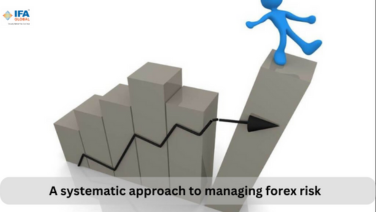SaaS Companies - How Does FX Impact You
3 September 2021 | By IFA Global

- A SaaS-based company (A Ltd) with an annual exposure of USD 30 Million and a healthy EBIDTA of 25%.
- The company’s revenue generation was based on online subscriptions and billed their clients both monthly and annually. They had multiple currency exposures, as they did business in more than 50 countries.
- They had a steady cash flow which was fairly predictable based on their past track records and business was growing at 30 percent CAGR.
Challenge and Observation
- The company was not hedging their receivables because of the view that the rupee was a depreciating currency and booking forwards or options may not be very beneficial.
- Often when the rupee appreciated the company had to face some losses on their accounts receivables and ad-hoc hedging was done because of the recency effect.
- There was no Risk Management Policy in place and hence clarity on FX P&L was missing.
- There was no benchmarking system to evaluate the performance of the treasury team.
- There was less transparency on the conversion rate and banking transaction costs. Often smaller tranches were booked/converted getting adverse rates.
- Cash surpluses were found idle at times and often parked with low-yield securities.
Process
- IFA prepared a detailed Risk Management Policy based on the business of the company, profitability, FX exposure, cash flow, and understanding of the industry peers and their strategies.
- Reviewed bank sanction letters and reduced the cost of banking transactions.
- Risk Tolerances and Benchmarks were clearly defined and hedging strategies were designed accordingly using Forwards and Options.
- Two Senior Advisors were assigned for the day-to-day implementation of the plan and training the team.
- Access to FX Research, FX Calculators, Scenario Analysis, and Treasury Management Softwares was provided.
Outcome
- IFA was able to improve EBIDTA margins by 4 percent and clearly defined an FX profitability matrix.
- Improved the reporting and review system by forming a Foreign Exchange Risk Management Committee with relevant policies and systems.
- Investment policies were re-defined and yields improved in between 1%-1.5% with proper asset allocation based on defined risk profiles.
- Most importantly volatility in FX was curtailed and brought within defined risk limits and certainty with an improvement in profitability.






